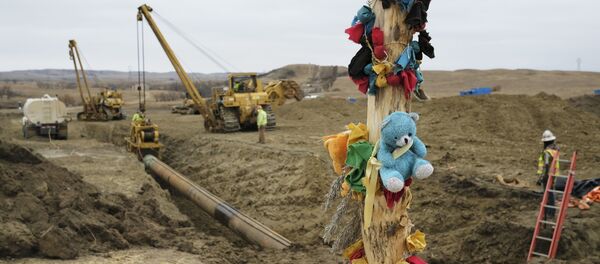WASHINGTON (Sputnik) – Standing Rock Sioux representative Linda Black Elk said Tuesday that the protests to go on until January 1, when most of the company's permits expire and they will have to reapply.
“At that point, it becomes completely unfeasible and economically ridiculous for them to still try to build the pipeline,” she explained. “We are hoping that the January 1st deadline is a magical date for us, and we are hoping that will pass without them being able to drill under the Missouri River.”
The US Army Corps of Engineers, which oversees the permitting process on the Interior Department’s behalf, has said it is seeking additional information from the Standing Rock Sioux, who object to the pipeline’s route because it threatens sacred tribal lands and would pollute water from Lake Oahe.
“The pipeline is pretty much constructed expect for this area under the river, so that’s sort of the focus now,” Black Elk said. “But what we really want to see is that roadblock taken down and us being allowed to practice our First Amendment rights.”
On Sunday, members of the Standing Rock Sioux and other Native American tribes who are protesting the construction tried to remove road barriers on a state highway bridge so that emergency vehicles could pass through, Elk said commenting on the clashes with police.
“In a show of good faith, the water protectors decided that they were going to remove part of a roadblock,” Elk said of Sunday’s actions. “We wanted to do it together. We were hoping law enforcement would come and help us clear some of the rubble.”
About 300 protesters – or “water protectors,” as they prefer to be called – were injured by law enforcement officers after an attempt to cross a state highway bridge.
On Tuesday, the sheriff in Morton County, North Dakota, Kyle Kirchmeier, defended his agency’s methods against protesters by saying that protests against the pipeline have become increasingly aggressive.
According to Black Elk, there are about 4,500 water protectors at camps near the construction site but the number can increase to 8,000 on weekends. She added that more than 300 Native American tribes are participating in the fight against the North Dakota Access Pipeline.




